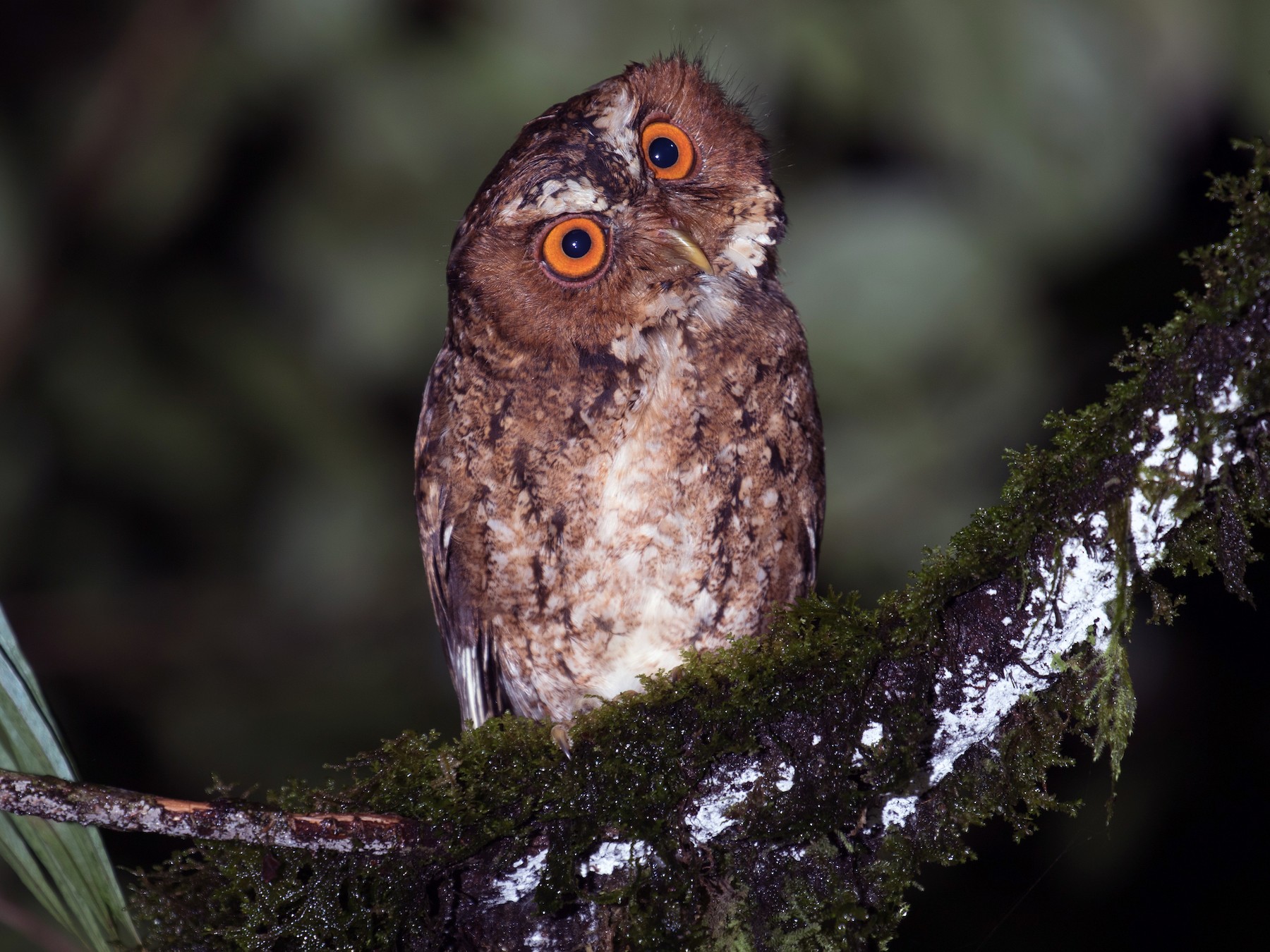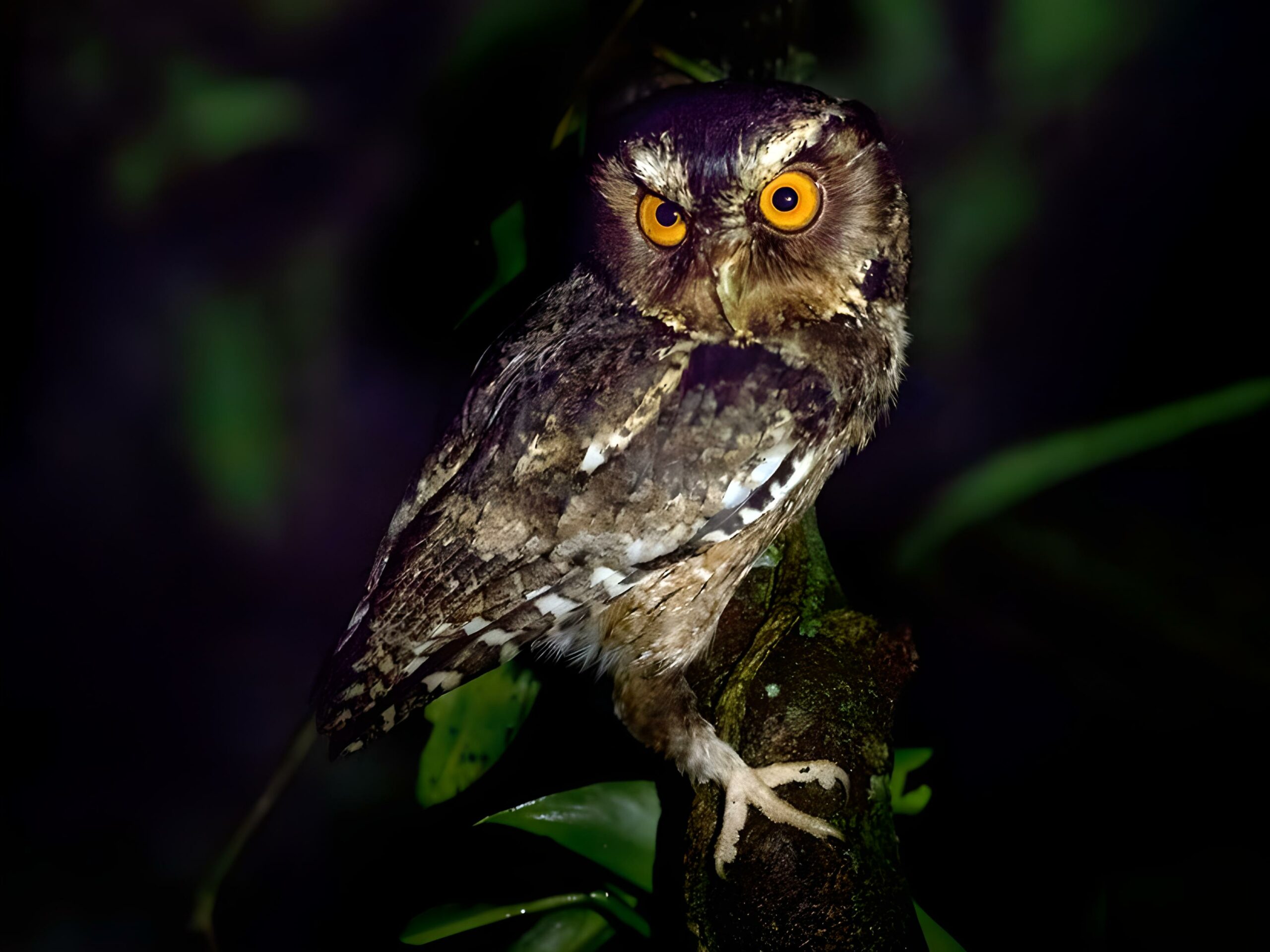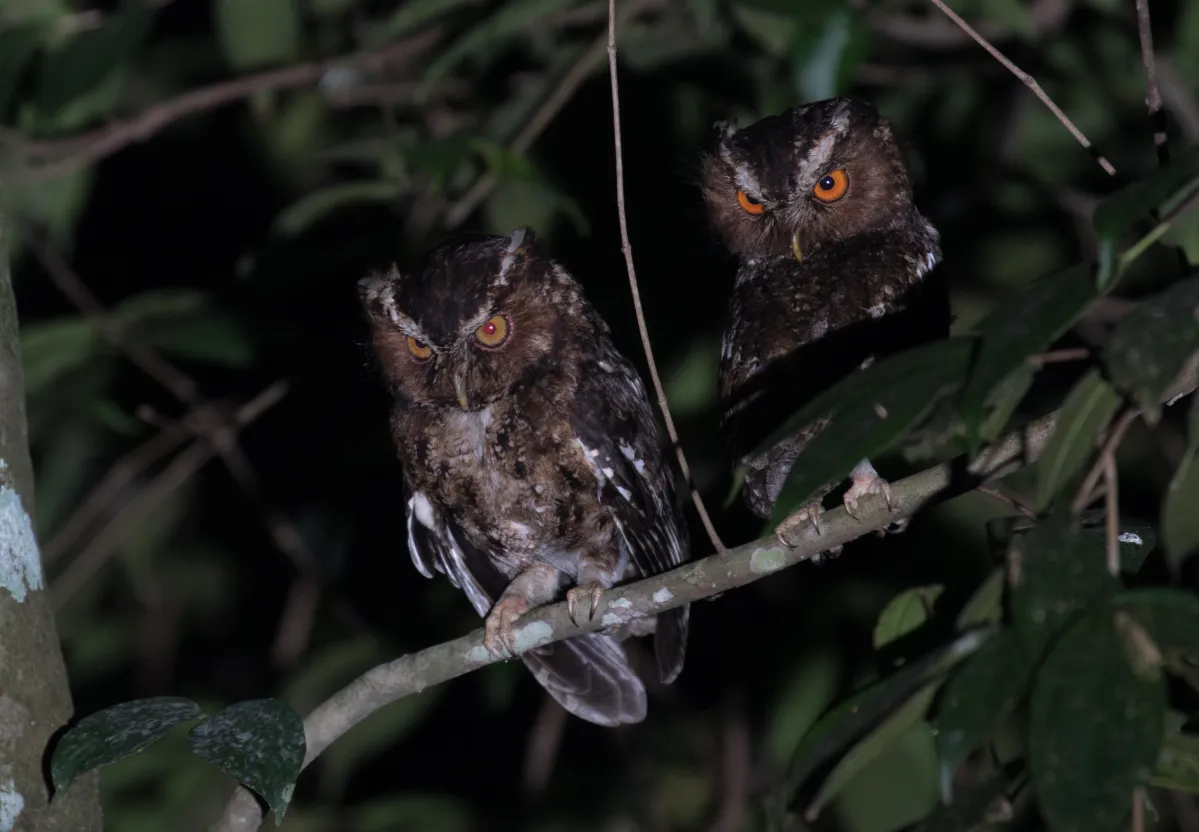Javan Scops Owl (Otus angelinae) is endemic to the island of Java, Indonesia. It prefers the upper and middle canopy of the forest but is known to dwell and forage in the lower canopy as well. The bird has a light brown plumage with black stripes on its chest and prominent white eyebrows.
Habitat

The Javan Scops Owl inhabits a range of forest types, including primary and secondary forests, as well as areas with bamboo and shrubs. They can be found at elevations of up to 1,500 meters and are typically found in lowland and hilly regions.
Characteristics
Javan Scops Owls are small, measuring around 20-22 centimeters in length, with 100-170 g body weight. They have reddish-brown plumage with white streaks and spots, giving them a distinctive appearance. Their eyes are large and yellow, and they have prominent ear tufts. Their have long life span, with approximately 10-12 years.

Diet and Behavior
Javan Scops Owls primarily feed on insects such as moths, beetles, and grasshoppers, although they may also eat small mammals and birds. They are nocturnal and hunt at night, using their excellent hearing and vision to locate prey. During the day, they roost in trees or dense vegetation and are difficult to spot due to their excellent camouflage.
Reproduction

Javan Scops Owls breed from March to May, with the female laying 1-3 eggs in a tree cavity or abandoned nest. Both parents take turns incubating the eggs, which hatch after approximately 20 to 30 days. The young are fed by both parents and fledge after around 30-35 days.
Although on Least Concern status according to IUCN Red List, we still must preserve this birds in the wild. So, Bali Safari Park take steps to maintain its population through conservation. It is time to learn about birds, animals and get involved in animal welfare with Bali Safari Park!






